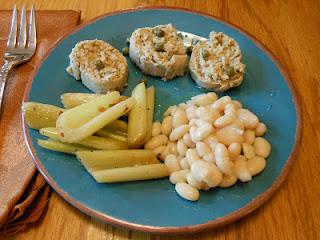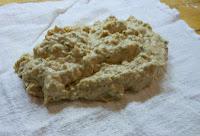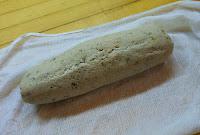 Admittedly, the book is not an easy read. The tenor is one of condescension and disdain, but given her vast experiences in the world of Mediterranean and Arabian cuisine during a time when many of the ingredients she used in her recipes were hardly known in Britain, it is understandable that she would be frustrated at the lack of available ingredients. The book was published in 1954 when there was still war-time rationing in England and most readers could only dream of trying out the crisply instructive recipes. In fact, during that time, olive oil was sold in pharmacies as a treatment for ear maladies. Garlic, eggplant, zucchini and basil were unheard of amid the austerity of 1950s Britain.
Admittedly, the book is not an easy read. The tenor is one of condescension and disdain, but given her vast experiences in the world of Mediterranean and Arabian cuisine during a time when many of the ingredients she used in her recipes were hardly known in Britain, it is understandable that she would be frustrated at the lack of available ingredients. The book was published in 1954 when there was still war-time rationing in England and most readers could only dream of trying out the crisply instructive recipes. In fact, during that time, olive oil was sold in pharmacies as a treatment for ear maladies. Garlic, eggplant, zucchini and basil were unheard of amid the austerity of 1950s Britain. Elizabeth David was the British equivalent to America’s Julia Child and her influence went beyond mere ingredients to include her Provencal-style kitchen and its “newfangled” equipment: cast iron pans, terracotta and earthenware pots, peasant pottery bowls of eggs, and artfully arranged fruit and vegetables. Until that point, kitchens had been purely utilitarian and hidden from view. So great was her influence that Le Creuset introduced its cast-iron pans in “Gauloise blue” inspired by the color of her favorite brand of cigarettes. She also changed the way food was depicted in magazines. Mashed potatoes no longer masqueraded as ice-cream. The photographs were taken of the actual food she had cooked; not the food stylists’ replications.

Unlike the cookbook formats we have become accustomed to, each section of the book begins with an essay sometimes with definitions and descriptions and other times with history or opinions which are followed by collections of recipes on a particular topic. With 24 recipes devoted to “tunny fish,” it is clear that this was Ms. David’s preferred ingredient. Tunny fish referred to canned “tuna” or tonno, which prior to industry regulation, could have been any of several varieties of true tuna or tuna-related species. This recipe for a rolled tuna loaf was the most intriguing of the collection.
POLPETTONE DI TONNO (Polpettone of Tunny Fish)
2 small tins of tunny fish of 150 grammes (approx. 7 oz.) each, 2 eggs, a tablespoonful of capers, pepper.
Put the contents of the tins of tunny fish through the food mill with the oil from the tin, or mash the fish if it is easier. Beat in the 2 eggs, season with pepper (and salt if necessary, but it probably won’t be), and stir in the capers so that they are evenly distributed. On a floured board form the mixture into a fat sausage.
Flour a cloth or a piece of butter muslin (doubled), roll the sausage up in it, and tie it with string, as salame sausages are tied, but not too tightly. Lower the marcel into a pan of boiling water. The pan must be large enough to accommodate the sausage lengthwise, or the size of the sausage must be adjusted to the size of the pan. Simmer gently for an hour or a little more. Unwrap the polpettone only when it is cold. Serve on a long dish, cut into thin slices. A potato salad makes quite a good accompaniment.



Tasting Notes:
This tuna loaf was nothing like I had imagined. Once sliced, it looked watery and grainy, so I drizzled some olive oil over the top and added a few capers. Even with the addition of olive oil the end result was watery and very fishy. Perhaps post-war standards were a bit lower than they are today or tunny fish was better in those days, but I will not be adding this recipe to the family recipe cache.

